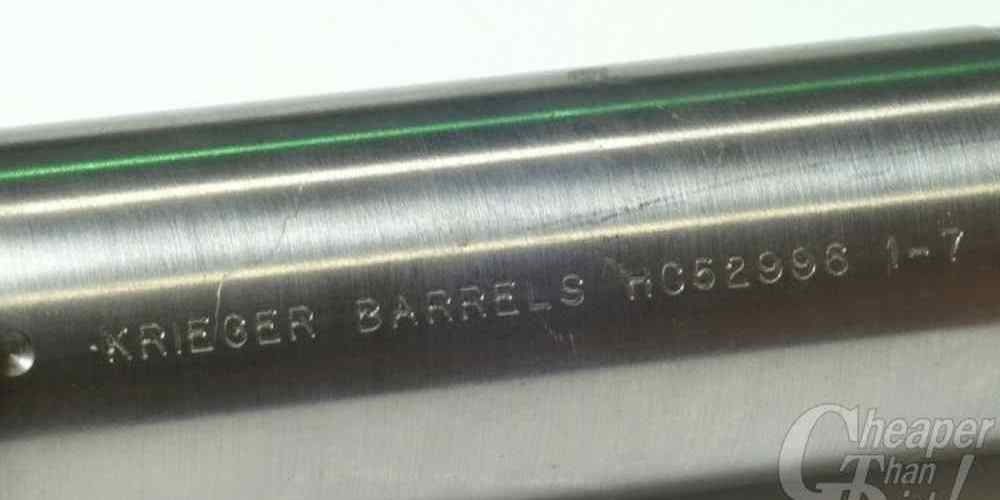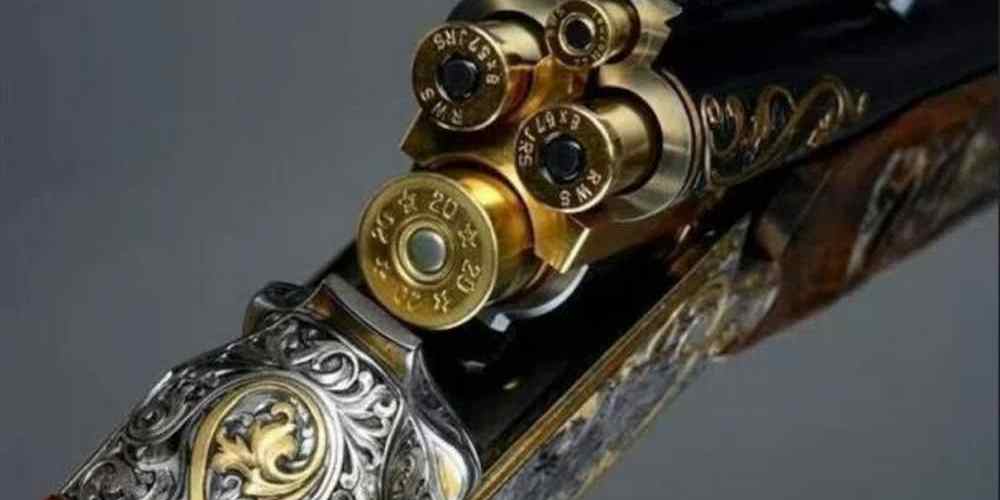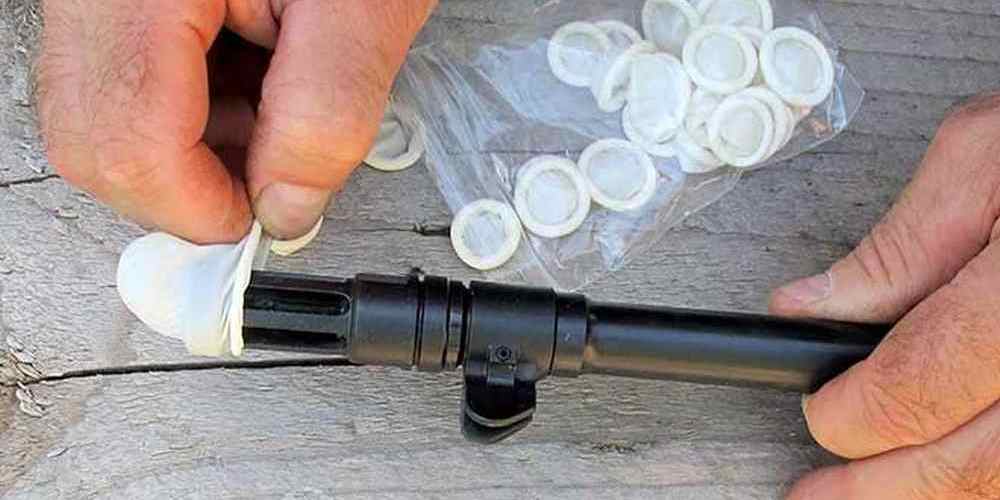“From hand-forged to precision-engineered: the evolution of rifle barrel manufacturing.”
Early Methods of Rifle Barrel Manufacturing
Rifle barrel manufacturing has a long and storied history, dating back centuries to the earliest days of firearms production. In the early days, rifle barrels were typically made by hand using simple tools and techniques. Blacksmiths would forge the barrels from iron or steel, shaping them into the desired dimensions and then rifling the bore to improve accuracy.
One of the earliest methods of rifle barrel manufacturing involved the use of a process known as “boring.” This involved drilling a hole through a solid piece of metal, which was then shaped and rifled to create the barrel. While effective, this method was time-consuming and labor-intensive, requiring skilled craftsmen to produce each barrel individually.
As technology advanced, new methods of rifle barrel manufacturing began to emerge. One of the most significant developments was the introduction of the rifling machine, which allowed for more precise and consistent rifling of the bore. This innovation revolutionized the industry, making it possible to produce large quantities of barrels quickly and efficiently.
Another important development in rifle barrel manufacturing was the advent of the cold hammer forging process. This technique involves shaping the barrel by hammering it with a series of dies, which compress and elongate the metal to create the desired dimensions. Cold hammer forging produces barrels that are extremely durable and have excellent accuracy, making it a popular choice for many modern firearms manufacturers.
In addition to cold hammer forging, other modern methods of rifle barrel manufacturing include button rifling and broach rifling. Button rifling involves pulling a hardened steel button through the bore to create the rifling, while broach rifling uses a series of cutting tools to carve the rifling into the barrel. Both methods are highly effective and produce barrels with exceptional accuracy.
Today, rifle barrel manufacturing has become a highly specialized and technologically advanced industry. Manufacturers use a combination of traditional techniques and cutting-edge technology to produce barrels that are incredibly precise and consistent. Computer-controlled machinery and advanced materials have revolutionized the process, allowing for greater efficiency and quality control.
Despite these advancements, there is still a place for traditional craftsmanship in rifle barrel manufacturing. Many custom gunsmiths and boutique manufacturers continue to produce barrels by hand, using time-honored techniques to create unique and high-quality products. These craftsmen take pride in their work, ensuring that each barrel is a work of art as well as a functional component of a firearm.
In conclusion, the historical evolution of rifle barrel manufacturing is a testament to human ingenuity and innovation. From the early days of hand-forged barrels to the modern era of computer-controlled machinery, the industry has come a long way. Today, rifle barrels are produced with a level of precision and consistency that was once unimaginable, thanks to advancements in technology and manufacturing techniques. Whether produced by hand or by machine, rifle barrels continue to be a vital component of firearms, ensuring accuracy and reliability for shooters around the world.

Advancements in Rifle Barrel Manufacturing Techniques
Rifle barrel manufacturing has come a long way since the early days of gunsmithing. The evolution of techniques and materials used in the production of rifle barrels has greatly improved the accuracy, durability, and overall performance of firearms. In this article, we will explore the historical advancements in rifle barrel manufacturing techniques that have shaped the industry into what it is today.
In the early days of rifle barrel manufacturing, gunsmiths relied on traditional methods such as forging and hand-rifling to create barrels for firearms. These barrels were often made from iron or steel and required a great deal of skill and craftsmanship to produce. While these methods were effective for their time, they were labor-intensive and limited in their ability to produce consistent and precise barrels.
As technology advanced, new manufacturing techniques were developed that revolutionized the way rifle barrels were made. One of the most significant advancements was the introduction of the button rifling process in the late 19th century. This method involved pulling a hardened steel button through a drilled barrel to create the rifling grooves. Button rifling allowed for faster and more precise rifling of barrels, resulting in improved accuracy and performance.
Another major breakthrough in rifle barrel manufacturing came with the advent of CNC machining technology in the 20th century. This computer-controlled machining process allowed for the production of highly accurate and consistent rifle barrels with minimal human intervention. CNC machining revolutionized the industry by streamlining the manufacturing process and producing barrels with tighter tolerances and better performance.
In recent years, advancements in materials science have further improved rifle barrel manufacturing techniques. The use of high-strength alloys and composite materials has allowed for the production of lighter and more durable barrels that can withstand higher pressures and temperatures. These materials have also improved the overall performance and longevity of rifle barrels, making them more reliable and efficient.
One of the most significant developments in rifle barrel manufacturing in recent years has been the adoption of cold hammer forging technology. This process involves using a series of hammers to shape a barrel blank around a mandrel, resulting in a barrel with superior strength and durability. Cold hammer forging has become a popular method for producing rifle barrels due to its ability to create barrels with consistent rifling and improved accuracy.
Overall, the historical evolution of rifle barrel manufacturing techniques has greatly improved the quality and performance of firearms. From traditional hand-crafted barrels to modern CNC-machined and cold hammer forged barrels, the industry has seen significant advancements that have shaped the way rifles are made. With continued innovation and advancements in materials science, the future of rifle barrel manufacturing looks bright, promising even greater improvements in accuracy, durability, and overall performance.
Impact of Industrial Revolution on Rifle Barrel Production
The Industrial Revolution had a profound impact on many industries, including the manufacturing of rifle barrels. Prior to this period, rifle barrels were typically made by skilled craftsmen using traditional methods such as forging and hand filing. However, with the advent of new technologies and machinery, the production of rifle barrels underwent a significant transformation.
One of the key developments during the Industrial Revolution was the introduction of mass production techniques. This allowed for the rapid and efficient production of rifle barrels on a large scale. Instead of relying on individual craftsmen to produce each barrel by hand, manufacturers could now use machines to streamline the process and increase output.
The use of new materials also played a crucial role in the evolution of rifle barrel manufacturing. Traditional barrels were often made of iron or steel, which required a great deal of skill and labor to shape and finish. However, with the development of new alloys and metalworking techniques, manufacturers were able to produce stronger and more durable barrels with greater precision and consistency.
Another important innovation that emerged during this time was the rifling of barrels. Rifling involves cutting spiral grooves into the inside of the barrel to impart spin to the bullet, improving accuracy and range. While rifling had been around for centuries, the Industrial Revolution saw the widespread adoption of this technology in rifle manufacturing.
The increased demand for rifles during this period also led to the standardization of barrel sizes and specifications. This meant that manufacturers could produce interchangeable parts that could be easily assembled into complete rifles. This not only made production more efficient but also made it easier for gunsmiths and users to repair and maintain their firearms.
Overall, the Industrial Revolution had a profound impact on the manufacturing of rifle barrels. It ushered in a new era of mass production, standardization, and technological innovation that transformed the industry. These developments not only made rifles more accessible and affordable but also improved their performance and reliability.
As the Industrial Revolution progressed, manufacturers continued to refine and improve their processes, leading to further advancements in rifle barrel manufacturing. New materials, such as stainless steel and carbon fiber, were introduced, offering even greater strength and durability. CNC machining technology allowed for even more precise and intricate barrel designs, further enhancing accuracy and performance.
Today, rifle barrel manufacturing continues to evolve, with manufacturers constantly pushing the boundaries of what is possible. Advanced computer modeling and simulation techniques are used to optimize barrel designs for maximum performance. Cutting-edge materials and coatings are employed to enhance durability and reduce maintenance requirements.
In conclusion, the impact of the Industrial Revolution on rifle barrel manufacturing cannot be overstated. It revolutionized the industry, paving the way for new technologies, materials, and production techniques that continue to shape the way rifles are made today. The legacy of this period lives on in the high-quality, precision-engineered rifle barrels that are produced around the world.
Role of Technology in Modern Rifle Barrel Manufacturing
Rifle barrel manufacturing has come a long way since its inception centuries ago. The evolution of technology has played a significant role in shaping the way rifle barrels are produced today. From the early days of hand-forged barrels to the precision machining techniques used in modern manufacturing, the process has undergone numerous advancements over the years.
In the early days of rifle barrel manufacturing, barrels were typically made by hand using a process known as forging. This involved heating a metal rod and shaping it into a barrel using a hammer and anvil. While this method was effective, it was time-consuming and required a high level of skill to produce a quality barrel. As technology advanced, new methods of manufacturing were developed that allowed for more precise and efficient production.
One of the key advancements in rifle barrel manufacturing was the introduction of rifling. Rifling involves cutting spiral grooves into the inside of the barrel to improve accuracy and range. This technique was first used in the 15th century and has since become a standard practice in barrel manufacturing. The development of rifling was a significant advancement in the industry, as it greatly improved the performance of rifles.
Another important development in rifle barrel manufacturing was the introduction of interchangeable parts. This innovation allowed for greater efficiency in production, as parts could be mass-produced and easily assembled. Interchangeable parts also made it easier for gunsmiths to repair and replace components, leading to a more reliable and durable product.
In the 19th century, the Industrial Revolution brought about further advancements in rifle barrel manufacturing. The introduction of steam power and mechanized production techniques allowed for faster and more efficient production. This led to the mass production of rifles and a significant increase in the availability of firearms.
In the 20th century, the development of new materials and manufacturing techniques revolutionized rifle barrel production once again. The introduction of stainless steel and other high-strength alloys allowed for lighter and more durable barrels. CNC machining technology also played a significant role in modern barrel manufacturing, allowing for precise and consistent production.
Today, rifle barrel manufacturing is a highly specialized and technologically advanced process. Manufacturers use a combination of traditional techniques and cutting-edge technology to produce high-quality barrels that meet the demands of modern shooters. CNC machining, computer-aided design (CAD), and other advanced manufacturing techniques are now standard in the industry, allowing for greater precision and efficiency in production.
The role of technology in modern rifle barrel manufacturing cannot be overstated. From the early days of hand-forged barrels to the precision machining techniques used today, technology has played a crucial role in shaping the industry. As technology continues to advance, we can expect to see further innovations in rifle barrel manufacturing that will continue to improve the performance and reliability of firearms.
Future Trends in Rifle Barrel Manufacturing
Rifle barrel manufacturing has come a long way since its inception centuries ago. From the early days of hand-forged barrels to the precision machining techniques used today, the evolution of rifle barrel manufacturing has been a fascinating journey. In this article, we will explore the historical development of rifle barrel manufacturing and discuss some future trends in the industry.
The earliest rifle barrels were made by blacksmiths who would hand-forge them out of iron or steel. These barrels were often crude and inconsistent in quality, leading to issues such as poor accuracy and durability. As the demand for more reliable firearms grew, gunsmiths began experimenting with new techniques to improve barrel manufacturing.
One of the most significant advancements in rifle barrel manufacturing came in the form of rifling. Rifling is the process of cutting spiral grooves into the inside of the barrel, which causes the bullet to spin as it travels down the barrel. This spinning motion stabilizes the bullet in flight, improving accuracy and range. Rifling was first introduced in the 16th century and quickly became a standard feature in rifle barrels.
In the 19th century, the Industrial Revolution brought about major changes in rifle barrel manufacturing. With the advent of new machinery and manufacturing processes, gunsmiths were able to produce barrels with greater precision and consistency. This led to a significant improvement in the overall quality of firearms, making them more reliable and accurate than ever before.
Today, rifle barrel manufacturing has reached new heights with the use of advanced materials and cutting-edge technology. Modern rifle barrels are typically made from high-quality steel alloys that are specifically designed for strength, durability, and heat resistance. These materials allow for tighter tolerances and more precise machining, resulting in barrels that are incredibly accurate and reliable.
In addition to traditional steel barrels, there has been a growing interest in alternative materials such as carbon fiber and titanium. These materials offer unique advantages, such as reduced weight and increased stiffness, which can improve the performance of a rifle. While these materials are still relatively new to the industry, they show great promise for the future of rifle barrel manufacturing.
Another trend in rifle barrel manufacturing is the use of computer-aided design (CAD) and computer numerical control (CNC) machining. These technologies allow for incredibly precise and complex machining processes that were previously impossible with traditional methods. By using CAD software to design the barrel and CNC machines to manufacture it, gunsmiths can create barrels with unparalleled accuracy and consistency.
Looking ahead, the future of rifle barrel manufacturing is bright. As technology continues to advance, we can expect to see even greater improvements in barrel quality, performance, and customization. From new materials to innovative manufacturing techniques, the possibilities are endless for the next generation of rifle barrels.
In conclusion, the historical evolution of rifle barrel manufacturing has been a remarkable journey of innovation and progress. From the early days of hand-forged barrels to the high-tech manufacturing processes of today, the industry has come a long way. With continued advancements in materials and technology, the future of rifle barrel manufacturing looks promising. Whether you are a seasoned hunter or a competitive shooter, you can rest assured that the barrels of tomorrow will be more accurate, reliable, and precise than ever before.




